Childhood cancers are complex and multifaceted challenges that require innovative and comprehensive approaches. While significant progress has been made in recent years, many of these cancers remain challenging to treat, and the need for groundbreaking research is more urgent than ever. One promising strategy is multidisciplinary research, a collaborative approach that brings experts from various fields together to tackle these complex challenges.
Take A Close Look at Multidisciplinary Research
In multidisciplinary research, clinicians share research goals and work on the same problem from their discipline’s perspective. This collaborative approach allows for a more comprehensive and in-depth understanding of the disease, as each discipline can contribute unique insights and expertise.
The findings from each discipline can be complementary, and a particular specialty can analyze each aspect uniquely. This can be necessary to answer complex research problems that cannot be adequately addressed by a single discipline alone. For example, a pediatric oncologist might focus on the biological aspects of a tumor. At the same time, a researcher might seek to understand better the patient’s genetic profile to slow tumor growth.
Benefits
Multidisciplinary research offers several key benefits:
- Increased Efficiency: By working together, researchers can avoid duplication of efforts and maximize the use of resources.
- Enhanced Innovation: Cross-pollinating ideas and perspectives can lead to innovative approaches and breakthroughs that might not be possible with a single disciplined approach.
- Improved Patient Outcomes: Multidisciplinary research can ultimately lead to better treatments and improved outcomes for children with cancer.
Multidisciplinary Research in Patient Care
A multidisciplinary approach to patient care can lead to a more thorough evaluation, accurate diagnosis, and tailored treatment plan.
For example, Multidisciplinary rounds (MDR) constitute a patient-centered care model wherein professionals from diverse disciplines collaborate in real-time to provide specialized expertise. These can include care partners, hospitalists, nurses, and pharmacists.
MDRs can help to ensure that all aspects of a child’s care are considered, from their physical and emotional needs to their social and financial well-being. This collaborative approach can also help to reduce the stress and anxiety experienced by families, as they know that their child is receiving the best possible care.
The Role of Bridge to a Cure Foundation
Bridge to a Cure Foundation supports multidisciplinary research into childhood cancers. By funding innovative research projects and fostering collaborations between researchers, we are helping to advance our understanding of these complex diseases and develop new and more effective treatments.
Through our efforts, with the support of people like you, Bridge To A Cure hopes to significantly impact the lives of children with cancer and their families.






